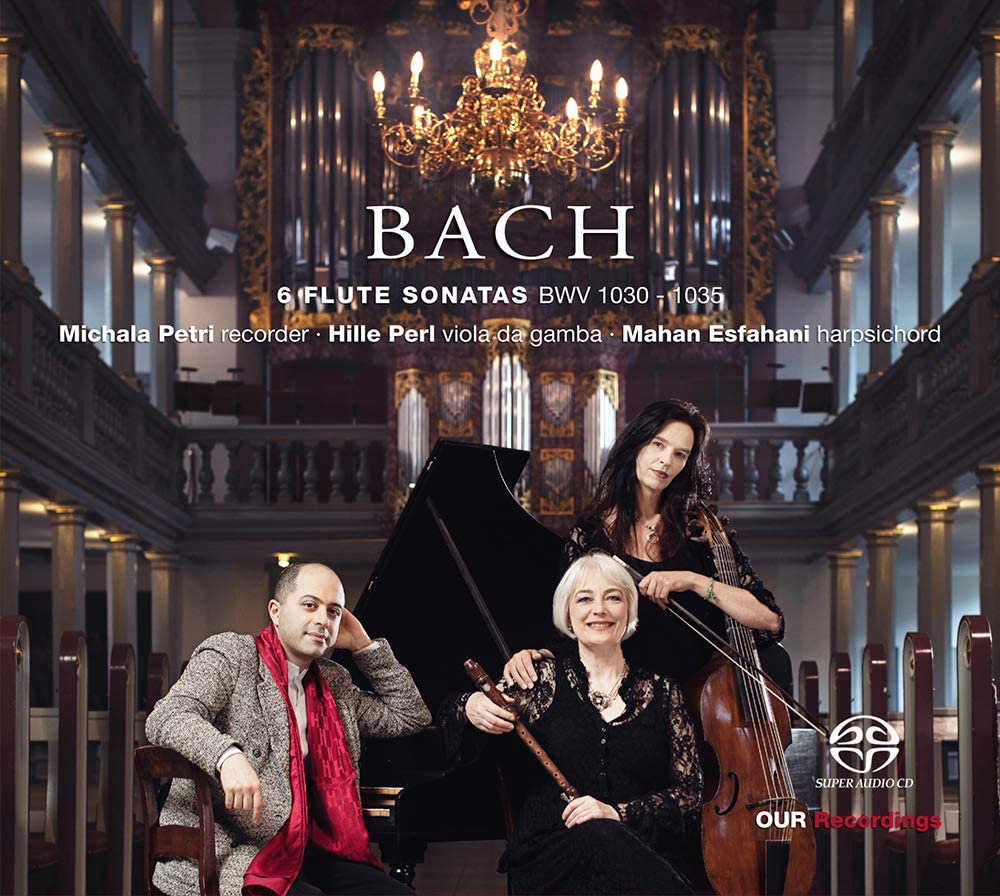 Bach: Sonatas for recorder, harpsichord and viola da gamba Michala Petri (recorder), Hille Perl (viola da gamba), Mahan Esfahani (harpsichord) (OUR Recordings)
Bach: Sonatas for recorder, harpsichord and viola da gamba Michala Petri (recorder), Hille Perl (viola da gamba), Mahan Esfahani (harpsichord) (OUR Recordings)
That these sonatas were originally composed by Bach for flute is surely of no consequence; Michala Petri’s affectionate, idiomatic performances on alto and tenor recorders convince from the outset. Importantly, she doesn’t attempt to impersonate a baroque flute, playing these sonatas as if they were written for her instrument. Petri’s sparing use of vibrato feels just right and she’s marvellous in Bach’s extended slow movements. Particularly successful are the two sonatas performed on a woody tenor recorder – the “Largo e dolce” of the BWV 1032, transposed down a tone to G major, is exquisite, Mahan Estafani and viola de gamba player Hille Perl providing sensitive, thoughtful support. And then you shift to the 3/8 finale, the three players dancing as one.
So many passages enchant. Petri’s skittish cadenza over Perl’s long pedal near the close of BWV’s first movement is like baroque jazz. Or Perl’s bell-like pizzicato notes at the start of BWV’s “Andante” – the moment when she starts bowing genuinely ear-tickling. And Esfahani’s exuberant, clattering accompaniment in the last movement of BWV 1035 closes proceedings with a smile. Superb production values, as is usual with this label, the forward balance given to Petri entirely appropriate.
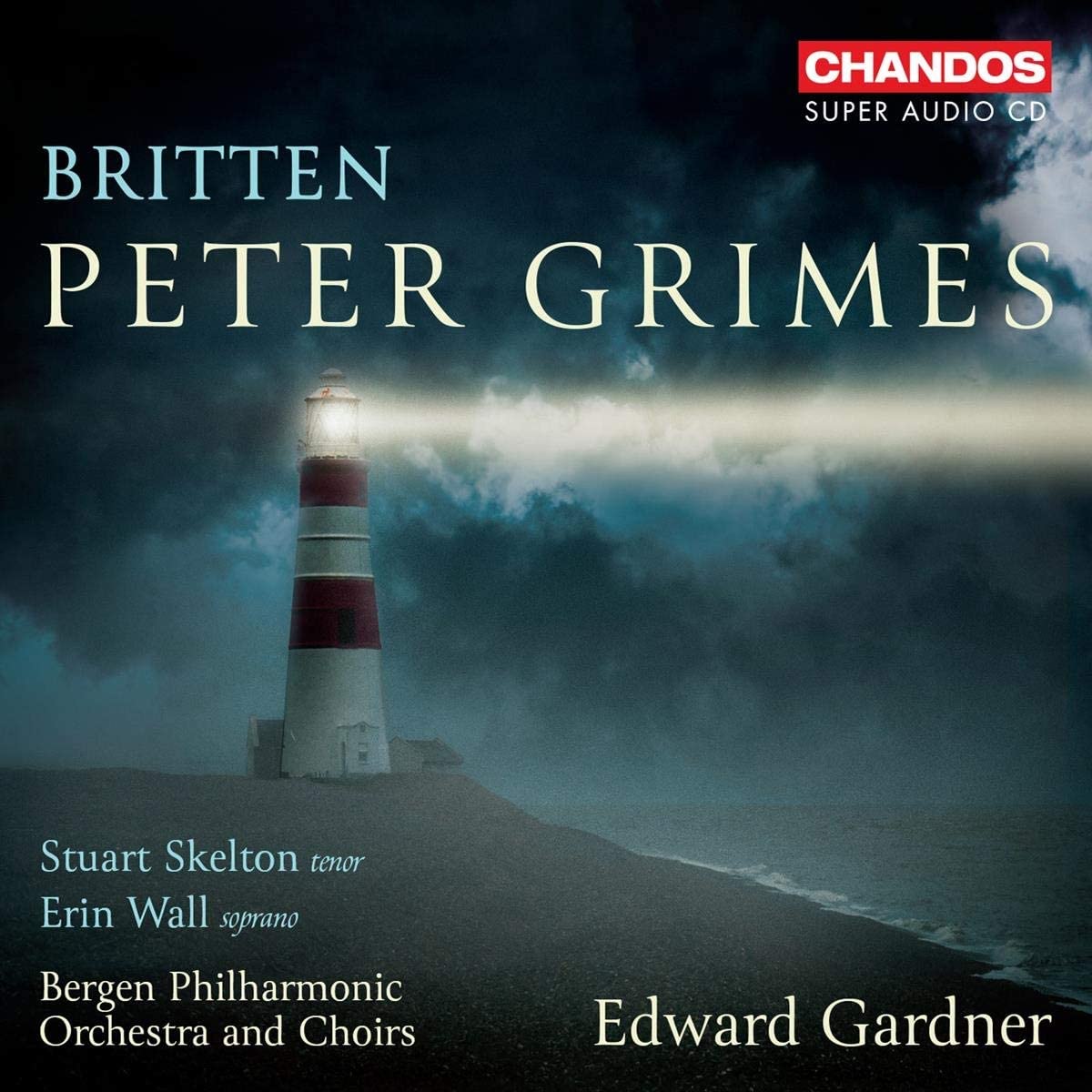 Britten: Peter Grimes Stuart Skelton (tenor), Erin Wall (soprano), Bergen Philharmonic Orchestra and Choirs/Edward Gardner (Chandos)
Britten: Peter Grimes Stuart Skelton (tenor), Erin Wall (soprano), Bergen Philharmonic Orchestra and Choirs/Edward Gardner (Chandos)
Recorded in November 2019 in conjunction with a series of semi-staged performances, this recording of Britten's Peter Grimes stands out by dint of being a studio production instead of a live taping. No stage noise, no fluffs, but no loss of intensity, and Chandos’s sound has incredible realism. You can hear absolutely everything. Orchestral playing and choral singing under Edward Gardner are superlative, and so well balanced; this has to be one of the most viscerally exciting accounts of Act 1’s storm interlude on disc. Get to “Old Joe has gone fishing” and every word is audible. And the crispness, the bite which Gardner brings to Act 2’s opening. All stunning – if you want to convert a novice to the joys of opera, buy them this set.
Stuart Skelton’s Grimes works for me, the vocal heft combined with acute sensitivity. He can actually act, invoking both fear and pity, and he’s very well matched by the late Erin Wall as Ellen Orford. Gardner shrewdly turns the screws in the closing scenes, the opera’s bleak coda leaving us exhausted. Superb, then: supporting roles are well-cast and this feels like a real ensemble production. The whole thing is well packaged too, Chandos including a full libretto along with compendious sleeve notes. Along with Alan Oke’s Signum Classics version, a definitive modern Grimes.
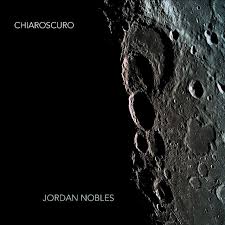 Jordan Nobles: Chiaroscuro (Redshift Records)
Jordan Nobles: Chiaroscuro (Redshift Records)
There’s intriguing mention on Canadian composer Jordan Nobles’ Wikipedia page of "spatial music and open instrumentation", but precious little technical detail, which is how it should be. Just as not knowing how a good magic trick is performed makes it all the more entrancing, I’m willing to believe that there’s something supernatural going on in Nobles’ 30-minute Chiaroscuro, a sustained single movement with the power to halt all conversation and prevent physical movement. You’ll end up rooted to the spot, desperate for the thing never to end. Played here by a 26-piece ensemble including six vocalists, it’s a slow procession of shifting instrumental colours. The odd detail sticks out, like a muted trumpet or a flurry of glockenspiel notes, and you notice how details emerge from the texture only to abruptly vanish again. Chiaroscuro makes for beguiling listening; at various points I was reminded of Bernard Herrmann and Morton Feldman, this performance succeeding because the musicians sound so involved. My new favourite contemporary work.
The coupling is a contrast, Nobles’ shorter Pulses more obviously influenced by contemporary minimalism. Pulses is softer edged though, the arresting colours and clearer harmonies taking precedence over rhythmic bite. You’re struck again by the warmth and depth of sound, and how sweetly the piece winds down and slips into silence. A genuinely gorgeous disc. Expand your horizons and buy it today.
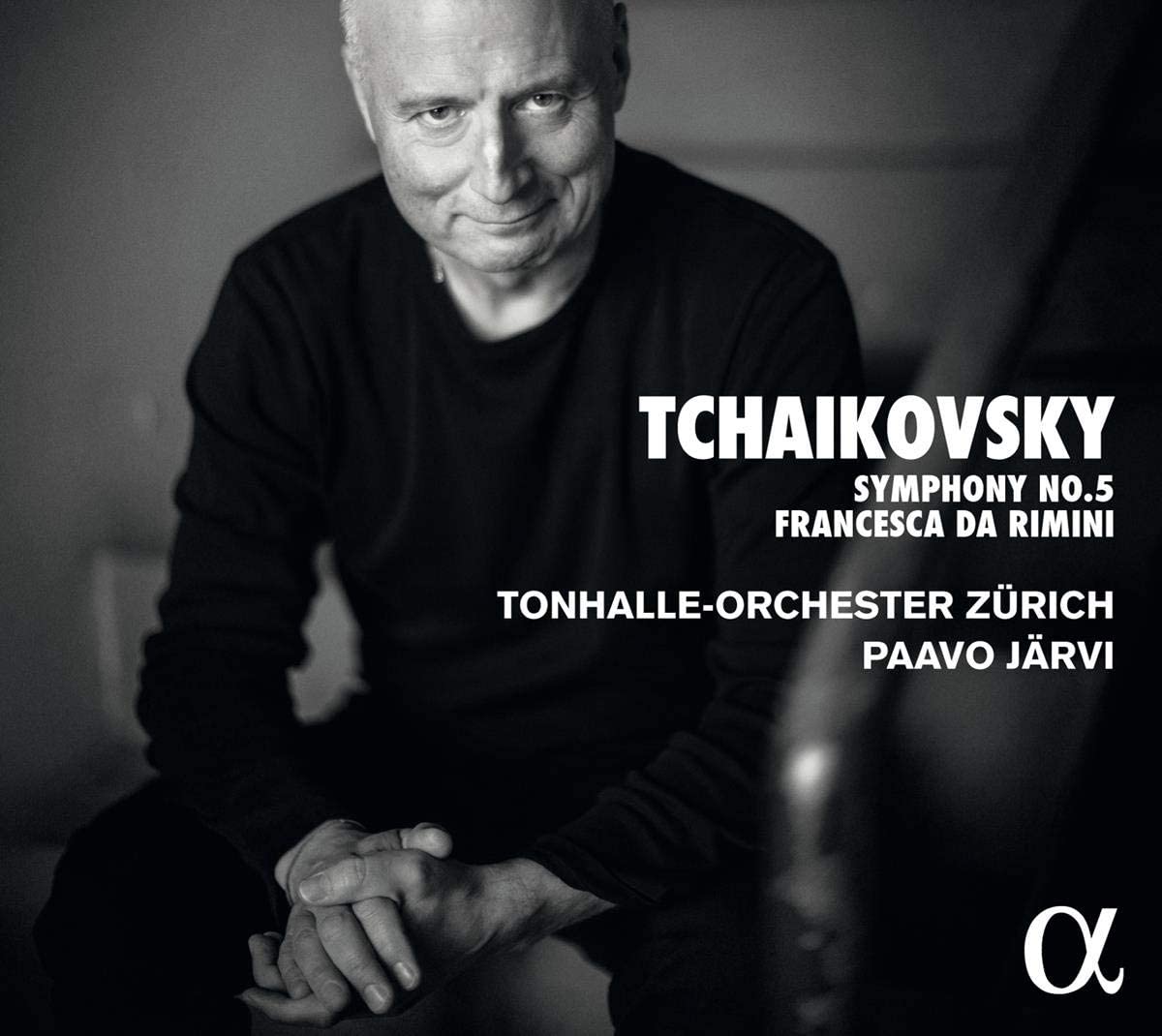 Tchaikovsky: Symphony No. 5, Francesca da Rimini Tonhalle-Orchester Zürich/Paavo Järvi (Alpha Classics)
Tchaikovsky: Symphony No. 5, Francesca da Rimini Tonhalle-Orchester Zürich/Paavo Järvi (Alpha Classics)
Mainstream repertoire that’s been recorded gazillions of times before, yes, but this is an impressive release. It won’t supplant Mravinsky’s Leningrad version on DG but this first volume in Paavo Järvi’s Tchaikovsky cycle is very decent. Movement timings can be deceptive, and I expected this performance to feel more expansive than it actually does. The fast section of Järvi’s opening movement, after a pitch-black clarinet intro, convinces because it’s so rhythmically alert, and because the tempo changes are so well handled; you don’t notice the gears shifting until you’ve reached your destination. The lush second subject, six and a half minutes in, is a case in point, sweetly played by the Zürich strings. Ivo Gass’s second movement horn solo presses the right buttons, and listen out for the rasping trombone pedals when the motto returns.
Järvi’s crisp, sharp finale is a highlight, Tchaikovsky’s protracted coda joyous rather than tedious. The coupling is Francesca da Rimini. Järvi and his players do their best to get us through the work’s longeurs, but the music’s failure to convince is Tchaikovsky’s. Buy this for the symphony, then. Engineering is outstanding, the recorded sound full of bloom and depth.
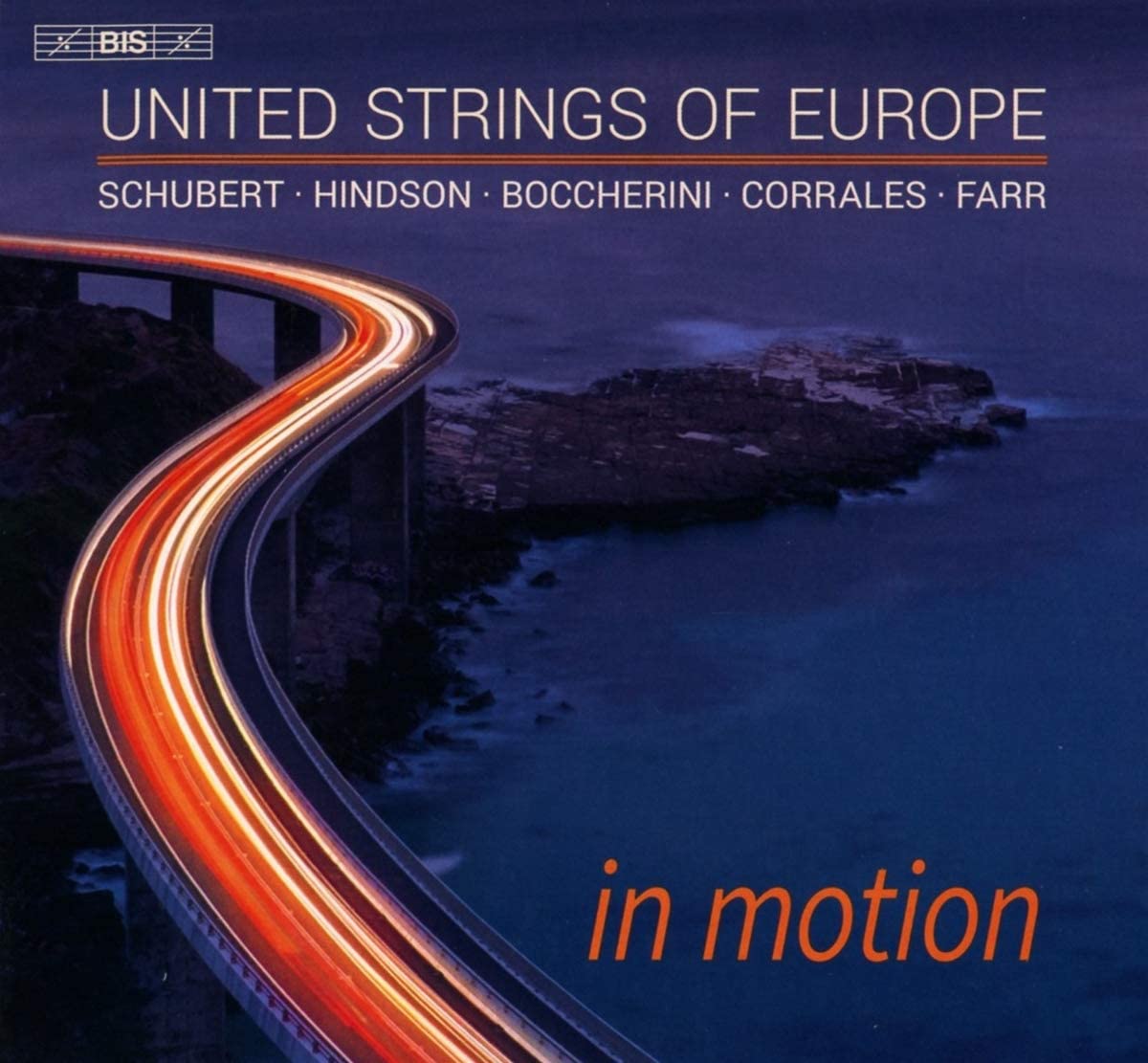 United Strings of Europe: In Motion – music by Schubert, Hindson, Boccherini, Corrales and Farr (BIS)
United Strings of Europe: In Motion – music by Schubert, Hindson, Boccherini, Corrales and Farr (BIS)
This is the United Strings of Europe’s debut release. A 13-piece London-based ensemble, their repertoire is predictably eclectic, the anthology showcasing the group’s stylistic flexibility. You don’t often see Boccherini alongside contemporary music from New Zealand, in this case Gareth Farr’s winningly titled Mondo Rondo, each of its three sections blessed with snappy titles. “Mumbo Jumbo”, the second part, features foot tapping, the pizzicato melodic material bouncing between players before a sinuous bowed theme brings things to a close. The finale, “Mambo Rambo”, is a propulsive dance. Skilfully arranged from Farr’s original string quartet by the USE’s director Julian Azkoul, it’s a treat. Two other contemporary pieces appear. Matthew Hindson’s Maralinga, for solo violin (here, Amalia Hall) and strings, is named after the desert location where Britain tested its nuclear weapons in the 1950s, with scant regard for the safety of the Aboriginal residents or the service personnel involved. It’s a dizzying, gruelling work, Hindson’s note flurries scattering like radioactive particles, colliding with distorted references to European classical music. Arturo Corrales’s Señores, les voy a contra… makes inventive use of a Salvadoran folk song.
Azkoul’s transcription of Boccherini’s Musica notturna della strade di Madrid is enchanting, Boccherini’s impression of a night out in 1780s Madrid enhanced with allusions to Arabic musical modes and a snatch of country music in the finale. Schubert’s Quartettsatz in C minor has a grandeur and sweep which makes it ideal for string orchestra transcription, though Azkoul occasionally reverts to the original’s quartet writing. Exciting stuff, with sharp playing and punchy recorded sound.
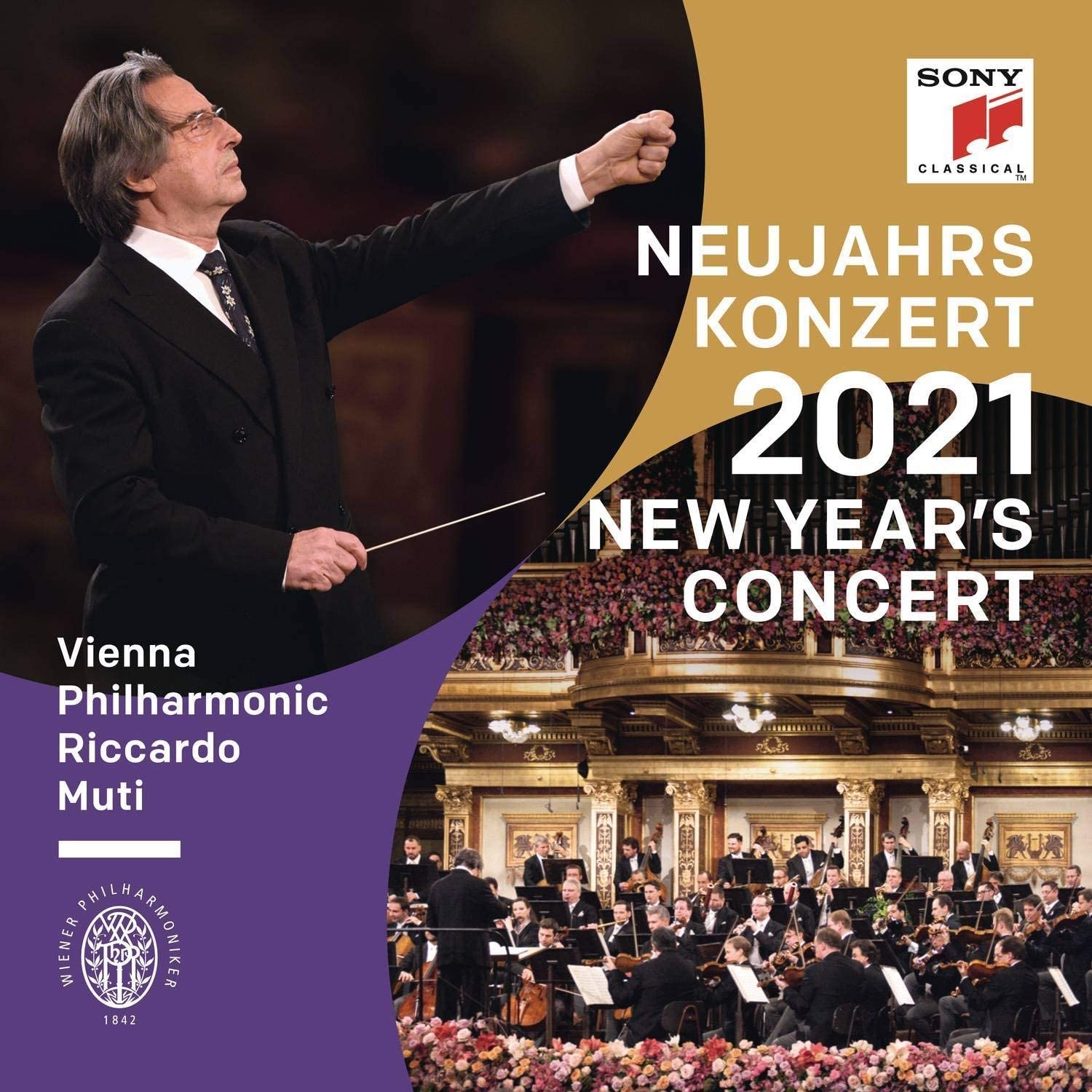 2021 New Year’s Concert Vienna Philharmonic/Riccardo Muti (Sony)
2021 New Year’s Concert Vienna Philharmonic/Riccardo Muti (Sony)
That a live recording can be edited, engineered and physically packaged, reaching one’s doormat in just a few weeks is a technical achievement in itself, though with the annual Viennese New Year’s Day concerts the repertoire (and aspects of the packaging) can be prepared months in advance. There’s a particular poignancy to this instalment conducted by Riccardo Muti, coming at the end of a year when so few orchestral concerts in Europe managed to go ahead, though Vienna's Musikvereinsaal was empty. Which must have had a psychological effect on the players, though, as David Nice points out in his review of the television broadcast, it's a relief to hear the Radetzky March without the badly synchronised offbeat claps.
It's the rarities that grab your attention. Carl Zeller was a Viennese civil servant who composed operettas on the side; his concert waltz Grubenlichter uses themes from an operetta about German coal miners. And the Prague-born Karel Komzák's Bad'ner Mad'in is fun, the quirky march opening the prelude to an opulent waltz composed for a spa town's band. Disc 2 is all Johann Strauss II. Muti keeps Stürmisch in Lieb' und Tanz rattling along, and his New Year's Address is affecting and eloquent. And I'm a sucker for the Blue Danube, its shimmering intro one of the greatest passages in late romantic music. Normal service to be resumed in January 2022, we hope.
- 2021 New Year's Day Concert on Amazon
- Read more of Graham Rickson's Classical CD reviews on theartsdesk














Add comment